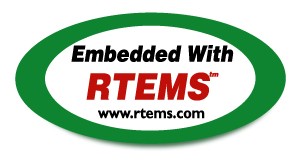


 Getting Started with RTEMS
Getting Started with RTEMS
Real-time embedded systems are found in practically every facet of our everyday lives. Today's systems range from the common telephone, automobile control systems, and kitchen appliances to complex air traffic control systems, military weapon systems, and production line control including robotics and automation. However, in the current climate of rapidly changing technology, it is difficult to reach a consensus on the definition of a real-time embedded system. Hardware costs are continuing to rapidly decline while at the same time the hardware is increasing in power and functionality. As a result, embedded systems that were not considered viable two years ago are suddenly a cost effective solution. In this domain, it is not uncommon for a single hardware configuration to employ a variety of architectures and technologies. Therefore, we shall define an embedded system as any computer system that is built into a larger system consisting of multiple technologies such as digital and analog electronics, mechanical devices, and sensors.
Even as hardware platforms become more powerful, most embedded systems are critically dependent on the real-time software embedded in the systems themselves. Regardless of how efficiently the hardware operates, the performance of the embedded real-time software determines the success of the system. As the complexity of the embedded hardware platform grows, so does the size and complexity of the embedded software. Software systems must routinely perform activities which were only dreamed of a short time ago. These large, complex, real-time embedded applications now commonly contain one million lines of code or more.
Real-time embedded systems have a complex set of characteristics that distinguish them from other software applications. Real-time embedded systems are driven by and must respond to real world events while adhering to rigorous requirements imposed by the environment with which they interact. The correctness of the system depends not only on the results of computations, but also on the time at which the results are produced. The most important and complex characteristic of real-time application systems is that they must receive and respond to a set of external stimuli within rigid and critical time constraints.
A single real-time application can be composed of both soft and hard real-time components. A typical example of a hard real-time system is a nuclear reactor control system that must not only detect failures, but must also respond quickly enough to prevent a meltdown. This application also has soft real-time requirements because it may involve a man-machine interface. Providing an interactive input to the control system is not as critical as setting off an alarm to indicate a failure condition. However, the interactive system component must respond within an acceptable time limit to allow the operator to interact efficiently with the control system.
Copyright © 1988-2004 OAR Corporation